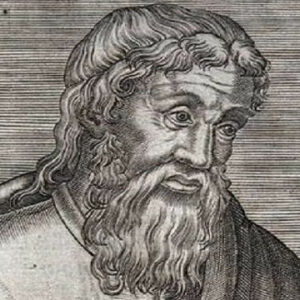Strabo was a Greek geographer and historian who lived in the early days of the Roman Empire, more than two thousand years ago. He was born into a wealthy and well-known family and had a top-notch education, first in Asia Minor and then in Rome. He met several influential figures in Rome, including Aelius Gallus, who helped him obtain Roman citizenship. He later accompanied Gallus to Egypt and subsequently traveled widely throughout the region. He then returned to Rome, where he spent the rest of his life studying and writing about the historical and physical qualities of the world he was familiar with. He wrote geography as a depiction of the popularly held notion of the world, as well as a representation of the topographical and political reality of the time. It contained all the communities and countries known to the Greeks and Romans during Augustus’ administration, based on his personal experience and knowledge imparted by great individuals of the past. His work, ‘Geographica,’ was a priceless collection of information that provided a fascinating glimpse into the world as it seemed too intelligent individuals during the Augustan Age.
Childhood and Adolescence
Strabo was born around the year 64 or 63 BC. He came from a wealthy and prosperous family.
He studied rhetoric at Nysa in Caria under the direction of Aristodemus, a rhetorician who had previously tutored Pompey’s sons (106–48 BC).
He came to Rome in 44 BC to study with geographer Tyrannion, Cicero’s old tutor, and philosopher Xenarchus of the Aristotelian school.
Later, he met philosopher Athenodorus Canaanites, Octavius’ old instructor and friend, and teacher, who most likely introduced Strabo to the future emperor’s entourage and persuaded him to convert to Stoicism.
Strabo’s Career
Strabo returned to Rome in 35 BC and stayed until 31 BC, during which time he wrote his first major work, ‘Historical Sketches,’ which was published in 20 BC. Only a few quotations remain from the work, which is now lost.
The ‘Historical Sketches’ covered the known world’s history from 145 BC to 145 AD, or from the Roman conquest of Greece to the Battle of Actium (31 BC). It was meant to be a supplement to Polybius’ History.
Meanwhile, there was greater travel. He went to Crete in 31 BC and journeyed through Corinth, Greece, where Augustus was residing in 29 BC. He stopped via the Aegean Sea island of Gyaros on his way to Corinth.
He spent five years at Alexandria, from 25 to 20 BC, and most likely studied at the great library. In the meantime, he sailed up the Nile as far as Philae with Marcus Aelius Gallus, the Roman governor, possibly around 25 or 24 BC.
He is next mentioned in 17 AD, when he was present at the victory of the Roman general Germanicus Caesar in Rome. From 14 to 21 AD, he spent his final years producing his second major book, Geographical Sketches, ‘Geographica.’
He carefully gathered relevant information from the earlier works of outstanding scholarly individuals for his geography book. He was also fascinated by the histories of many towns and states, as well as the extraordinary geological events of his day.
Before his death a few years later, he completed the opus ‘Geographica.’
Strabo’s Major Projects
The ‘Geographica’ of Strabo is divided into 17 volumes. It was put together sometime between 14 and 21 AD, while certain pieces were clearly written earlier. Except until the end of book seven, all of the novels have survived.
In Geographica, he pointed out flaws in the map created by Greek scholar Eratosthenes (276–194 BC) and praised the work of Polybius, an ancient historian, and geographer. In addition to Polybius, he consulted Poseidonius, Artemidorus, Apollodorus of Athens, Demetrius of Scepsis, and others while composing his book.
His Historical Sketches covered the Greco-Roman world’s history. It lasted several years, beginning with the Roman conquest of Greece (145 BC) and ending with the Battle of Actium (31 BC). It was created as a follow-up to the great Greek historian Polybius’ work. It initially comprised 43 books, which are now gone.
Personal History and Legacy
Strabo traveled extensively, from Armenia to Tuscany (opposite Sardinia) and from the Black Sea to Ethiopia’s borders.
He died in the year 24 AD, leaving a wealth of historical and geographical information and insight behind.
Estimated Net worth
Unknown.


